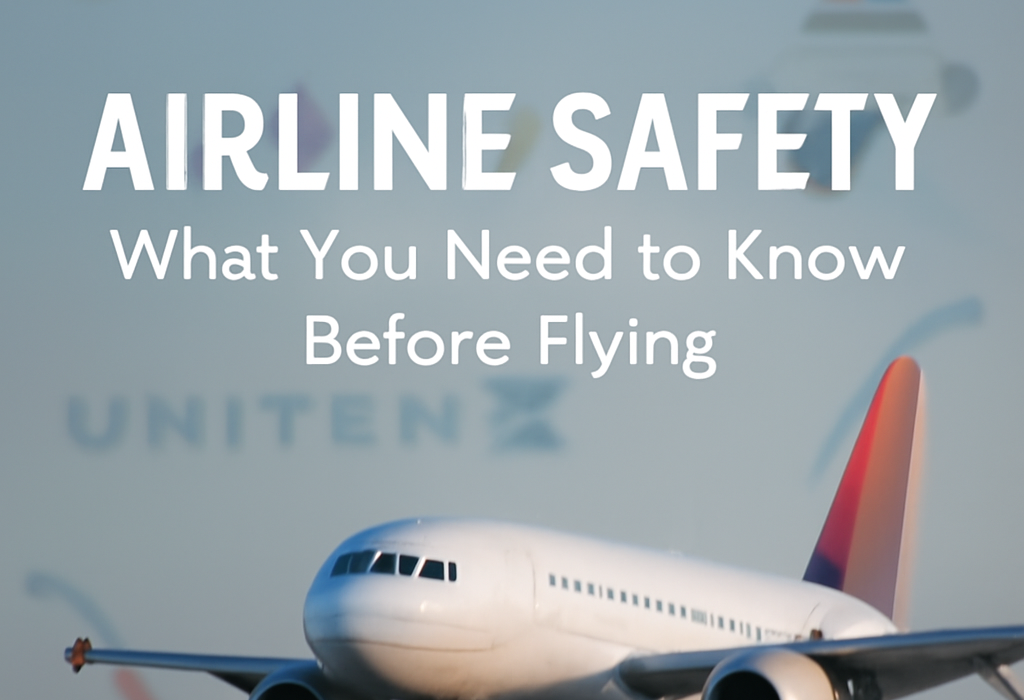Introduction
Air travel is widely considered one of the safest modes of transportation. However, have you ever thought about everything that goes into keeping you safe when flying? Airlines first consider airport security and then everything in between when you actually take off and land. This document outlines what you need to know when it comes to airline safety methods as you prepare for your next flight.
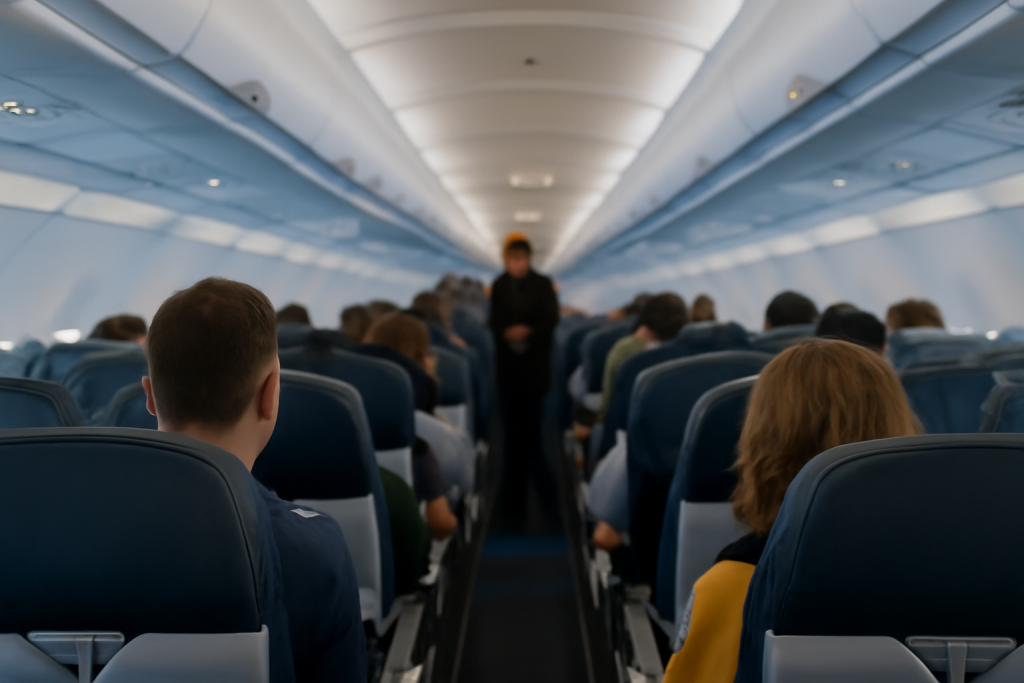
1. Pre-Flight Airline Safety Measures
There are a number of safety measures that are put in place to make sure your air travel goes as smoothly and safely as possible before you even board the aircraft. Let’s explore the steps that take place before you board your flight.
Airport security is an essential element of flying. To understand more about the screening process and restricted items, visit the TSA Guidelines and Travel Tips.
Airport Security Checks
As part of your travel experience, going through security may be one of the more annoying portions of air travel, but it does keep us safe from potentially dangerous items making it onto the aircraft.
Airport security is an important element of flying.
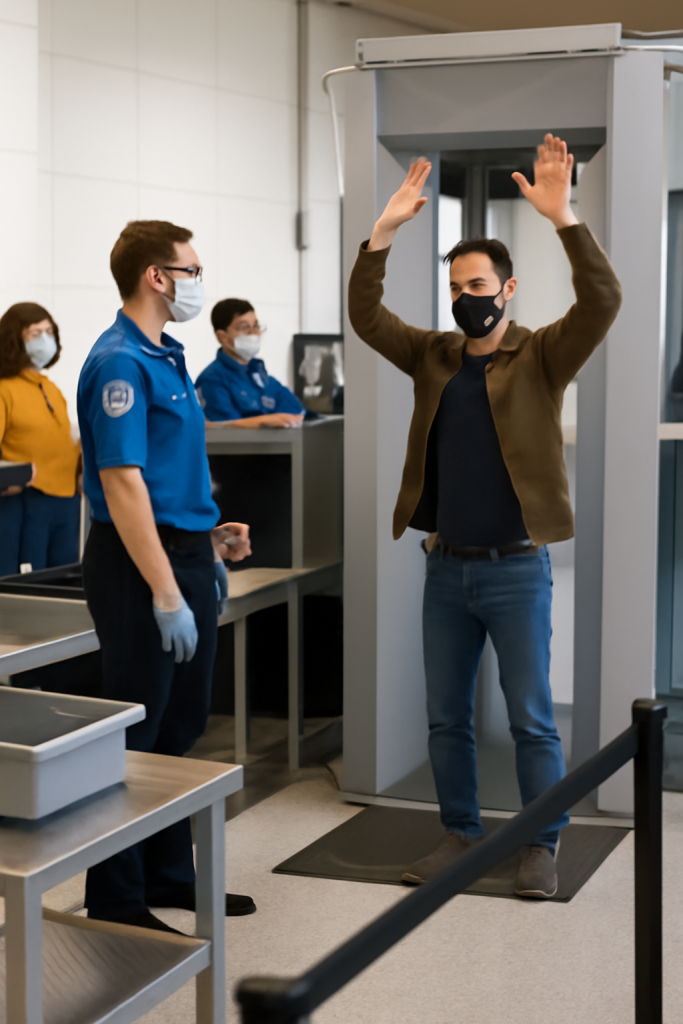
Things That Happen During Airport (Airlines) Security:
- TSA Screening: The Administration for Security, known as the Transportation Security Administration (TSA), screens travelers in many areas of the world. Travelers will now familiarize themselves with a passenger scanner and the x-ray machine for carry-on luggage.
- Prohibitive Items: Sharp objects, liquids that exceed an allowable limit, and combustibles are a few examples of things that cannot be brought onto a flight. Knowing this allowed list of items can reduce your time at the airport, and possibly allow you to still catch your scheduled flight.
- Security Policy: You may be requested to take off shoes, belts, and jackets. You may also be asked to take out electronic equipment, including laptops and tablets, from your luggage to be concierge screening.
Identifications & Boarding Passes
You will need identification and boarding passes before boarding the airplane of any airlines. Here is an elevations outline of the main documents:
- Boarding Pass: The boarding pass provides important information to the airline, including the flight number, departure time, and seat assignment. Some airlines allow for digital boarding passes.
- Identification: Always remember to have valid drosophila use state identification in case you are requested to produce it. For international flights, a passport is required. Some countries may also require a visa or other printed documentation.
2. Airline Safety Procedures In-Fight
There are many procedures onboard to protect you while on the flight by the airline . The following in-flight safety procedures are implemented to protect you from any circumstances.
Seatbelt Use: A Necessary Safety Feature
The seatbelt is one of the most generic yet also essential safety features on a plane.
Why Are Seatbelts Important?
- Turbulence: Turbulence can happen suddenly with little warning and if you are not in your seat with your seatbelt fastened, you risk being injured. Even when the seatbelt sign has been turned off, it is good practice during your flight to have your seatbelt fastened.
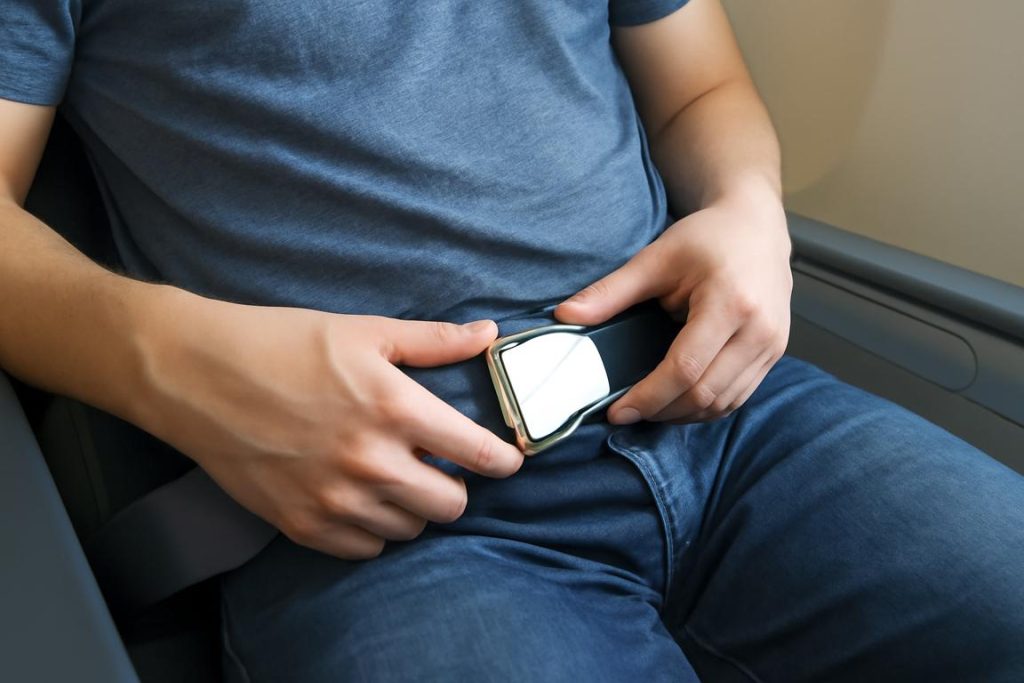
- Takeoffs and Landings: The periods in flight that pose the greatest risk of injury are during takeoffs and landings (up and down). The seatbelt is used to make sure you remain in your seat during this period of flight.
Oxygen Masks and Life Jackets: Emergency Equipment
Emergencies are rare in aviation, but it is important to know when and how to use the equipment.
- Oxygen Masks: In the event of cabin pressure loss, oxygen masks will automatically drop down from the overhead compartment to ensure you have enough air to breathe.
- Masks: After you are secure in your own mask, you can help the children and others around you. You must not remove the masks until you are told it is safe to do so.
- Life jackets: The life jackets are under your seat, and the Flight Attendants will demonstrate the life jackets and how to put them on. If the aircraft encounters a water landing, the life jacket under your seat will help keep you afloat.
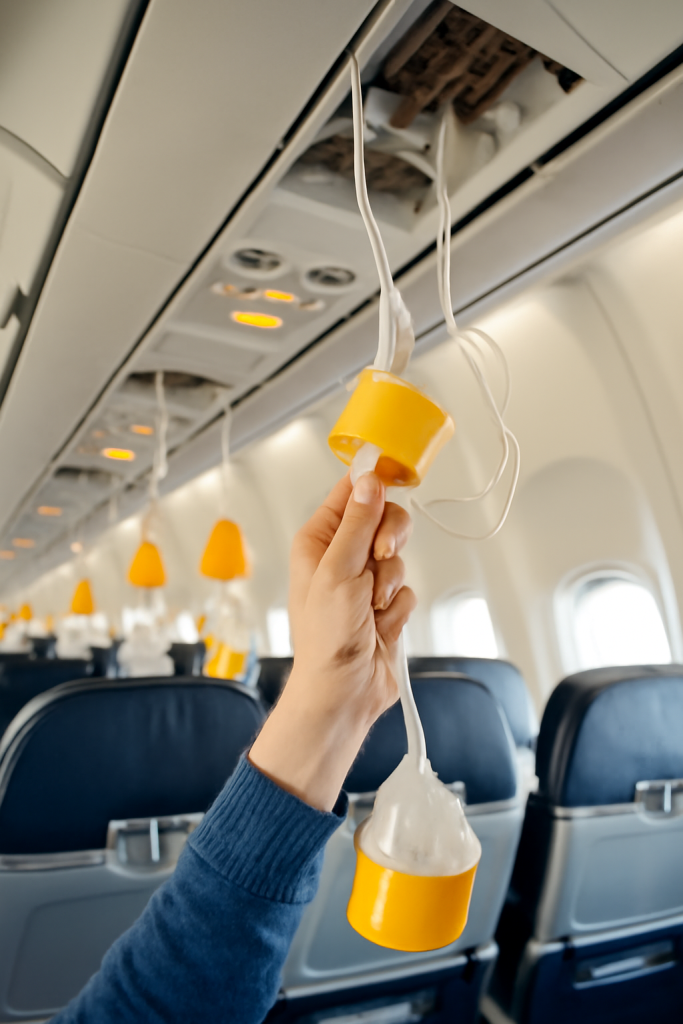
Emergency exits and evacuation procedures
In an emergency, you will need to know how to exit the aircraft.
Evacuation Procedures:
- Exit Locations: Pay attention to the safety briefing so that you will know the location of the nearest emergency exits. Emergency exits like the life jackets may not be where you expected, and you must have flexibility in unforeseen circumstances.
- Evacuation Slide: In the event of an emergency evacuation, inflatable life rafts or slides will be used. Flight attendants will show you how they work if you have forgotten, or if this is your first flight.
3. Flight Attendants: Key Players in Passenger Safety
Flight attendants have received specialized training to be prepared for a variety of situations. Flight attendants are more than just servants for meals and drinks.
Pre-Flight Safety Presentation
Before the aircraft leaves, the flight attendants will provide a safety presentation and it usually consists of the following:
- Using Your Seatbelt: A brief presentation on how to put on your seatbelt.
- Use and Location of Safety Equipment: Mentions the location and use of the oxygen mask and lifejacket.
- The flight crew will point out the nearest exits and explain how to safely evacuate the plane in an emergency.
In-Flight Safety Monitoring
Once the flight has commenced, the flight attendants continue to monitor safety:
- Safety Monitoring of Passengers: The flight attendants will observe passengers and ensure that safety protocols are followed, particularly during periods of turbulence.
- Medical Emergencies: The Arizona flight attendants will be aware of what to do during a medical emergency due to being trained in first aid, and they will also notify emergency personnel if they need assistance. They also will know evacuation procedures in the event of an emergency which makes them valuable in emergency situations.
4. Turbulence: Understanding and Staying Safe
While turbulence is a normal part of air travel, it can still feel unsettling to some passengers.
- This is the most frequent type of turbulence encountered during flights. This is usually no cause for concern for most passengers.
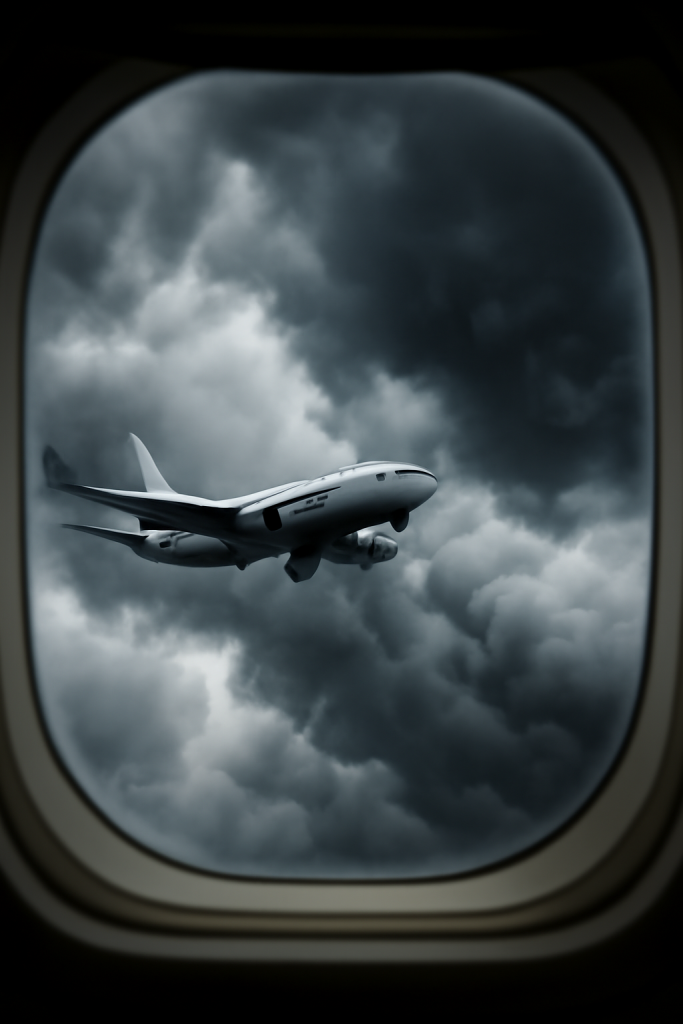
- Moderate Turbulence: To the passenger, it may feel a little bumpier but the plane is designed to endure it.
- Severe Turbulence: This type of turbulence is rare but can be uncomfortable. Note: it doesn’t cause serious harm, but you should observe the rule of staying seated with your seatbelt on while any turbulence is experienced.
What to Do During Turbulence
- Stay Seated: Keep your seatbelt on during turbulence to be safe moving forward. Even when the seatbelt sign is turned off, it’s always safer to remain seated with your seatbelt fastened.
- Stay Calm: Cam is a better approach. While turbulence can be uncomfortable, it is generally not harmful or dangerous. It is uncommon for flights to be unsafe. Your pilots and the cabin crew are trained to deal with such turbulence situations.
5. Post-Flight Safety Procedures
After landing, pilots and flight attendants can still use some safety procedures to ensure the safe exit of passengers.
Safety Deplaning
- Wait: Always wait for the seat belt sign to be turned off before you get up. When the seat belt sign is off and the flight attendants have indicated it is safe to deplane, do so in an orderly manner as instructed by the flight attendants.
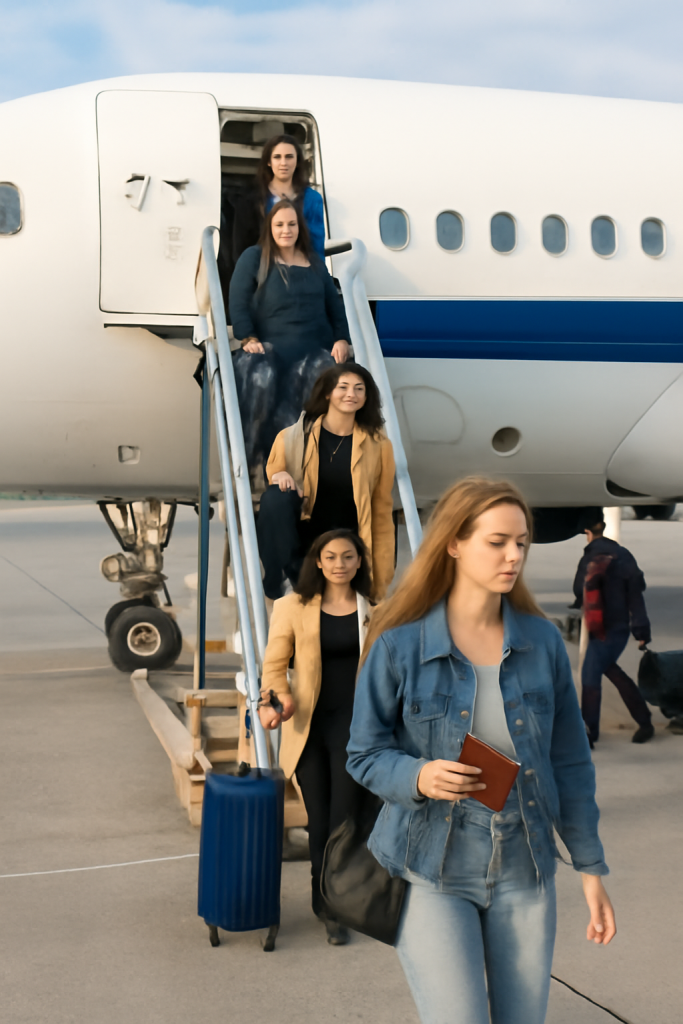
- Stay Calm: It may be tempting to rush out of the aircraft, but staying calm and following instructions will help facilitate an efficient deplaning process.
6. Advanced Safety Technology in Aviation
Aircraft are equipped with advanced technologies which all contribute to “flight safety”.
Collision Avoidance Systems
Modern-day aircraft have systems designed to help avoid collisions.
- Traffic Collision Avoidance Systems (TCAS): This is a system that will alert the pilots if another aircraft is closing in on a potential collision as well as what evasive action will help to avoid that aircraft.
Improved Turbulence Detection
Thanks to new radar technology pilots can see turbulence ahead of time and adjust the flight path accordingly to Help avoid the turbulence.
Autopilot Systems
Autopilot is useful, especially on routine flights, in that it allows pilots less chances of making a mistake. Remember, the pilots are still in control and can turn off the autopilot whenever they choose.
7. The Importance of Airlines in Safety
Airlines have a vital role in keeping safety levels high.
Maintenance and Inspections
- Aircraft: Airlines are required to perform normal maintenance checks on their aircraft to ensure the aircraft are safer and running well.
- Engine: The engines are also checked frequently to ensure there are no mechanical failures while you are in the air.
Crew Training & Certification
- All airline personnel participate in thorough training, including training for both planned events and emergency situations, every airline employee will know how to execute various tasks and what actions to take in whatever situation arises.
Conclusion: Your Safety In-Flight Airline
safety measures exist so to ensure that your flight experiences are as safe as possible. Safety begins well before you board any flight, from the pre-flight security checks to the safety measures implemented on the aircraft itself and even the emergency procedures all airlines go through at the start of their operations, there are a significant amount of safety measures that aviation adopts, these are all undertaken with a priority on passengers’ safety.
Being informed about these matters is relatively easy, as is the application of defeat measures/exclusive safety measures, and by having more knowledge, you are even safer in the air and assisting to make flying safer for yourselves and everyone else on board.
For more tips on making your travel experience both safe and affordable, check out our article on Affordable Countries to Travel in 2025. Stay safe and enjoy your journey!

